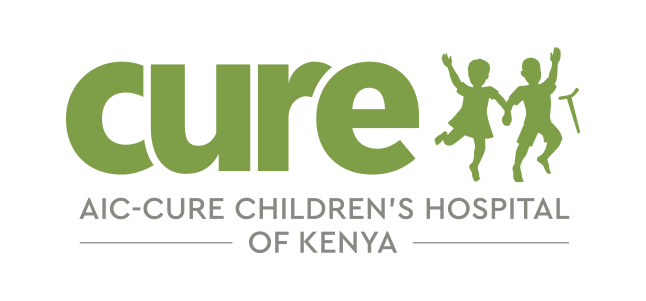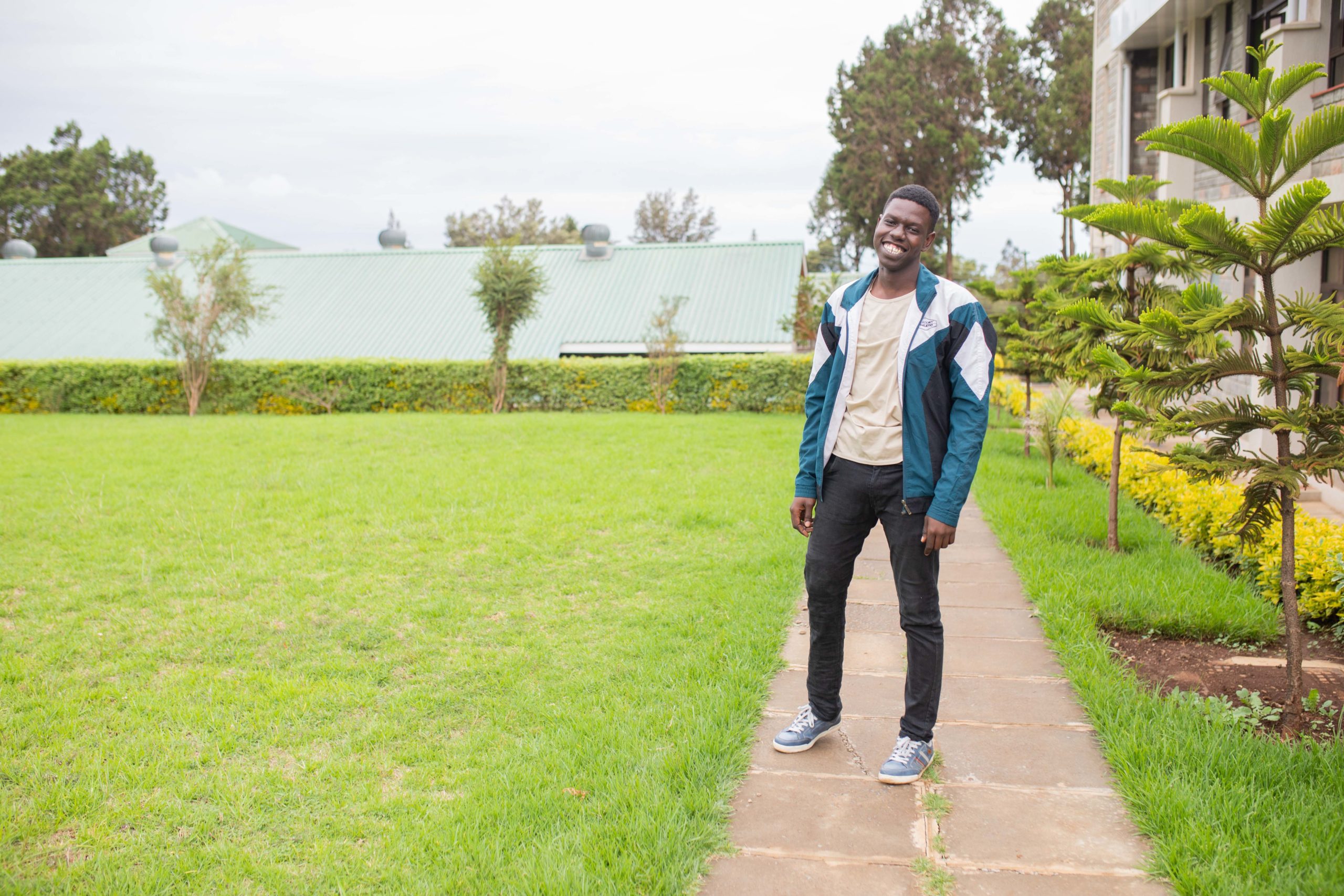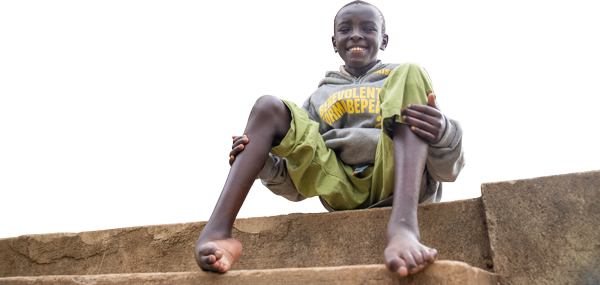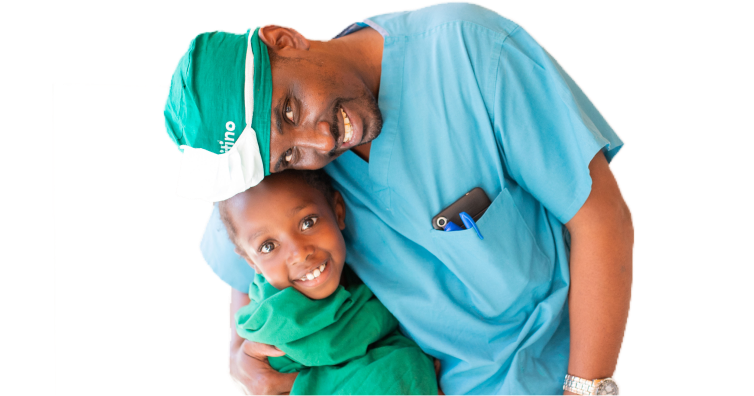Ten. It’s the percentage of the world that’s left-handed and the number of hours of sleep that a baby needs, but it also has another meaning for child named Shadrack. You see, Shadrack was CURE International’s tenth patient ever. Back in 1998, before CURE Kenya was even operating in our current building, Shadrack came and began his journey with CURE. He’s 24 now, but back then, he was 3.
Shadrack came to CURE because his right leg was shorter than his left. “My first surgery, they were making it kinda straight,” he explained to us. He doesn’t remember much of his first time at CURE Kenya, but he does know a little, from his memory or pictures. “The first surgery I had, I used crutches,” he explained. “I remember the second one more. It was about 2000, 2001. There were things fitted on my knee. I had to come back, and they had to remove the things.” We’re not sure of all the details, but we would imagine that the first surgery was intended to help with his leg length discrepancy, and the second one was to remove the hardware from that first procedure.

We do know the names of the procedures and when they happened:
- 1998—scheduled for osteotomy and lengthening of the right femur
- 2001—proximal tibial osteotomy
- 2013—BKA (below knee amputation) done
Unfortunately, the surgeries didn’t completely solve the problem. “I used to use a raised walk,” he told us. That’s a shoe with extra height added to the sole. He also told us something else: “I used to ride my bike to school.” We’re not sure how long this lasted or if he rode his bike with a raised walk, but, “With time, the shoes got bigger, bigger, bigger.” Eventually, when he was seventeen, it had gotten to the point that his right leg was so much shorter and the “raised walk” was quite raised. Shadrack and his family had to make a decision. “My parents let me decide if I wanted the amputation or not.” Shadrack still remembers the date: “20th July, 2013.” He said it wasn’t too hard of a decision, but “it was kinda difficult to let a part of you go.”
After Shadrack had the amputation, he got a prosthesis. “I go to the gym,” he told us. “A little bit of weights.” He can even jog a bit if he pushes himself, but not too much. “I only miss the running,” he said. “I used to play basketball.” In fact, he still plays sometimes, but it’s harder with a prosthesis. Shadrack even drives! “I can drive. I can drive a manual car, though I’m not allowed by the police.”
This driving has the potential to be helpful as he assists his dad with selling farm supplies and also in what he does. You see, Shadrack is about to graduate with a degree in Crop Improvement and Protection. Aside from helping his dad out with his business, he also has a farm of his own that he hopes to grow bigger someday. “You don’t look like a farmer,” we told him. His reply? “You have to work smart. You don’t have to be (look) dirty to be a farmer!”
We also asked Shadrack about CURE’s spiritual ministry. “At home, we’re Christians,” he said. “We go to church every Sunday … we’re lucky to be born again.” He commented on how most hospitals don’t have a spiritual ministry. Shadrack said that at CURE, “you get better physically and also spiritually.”
Shadrack also acts as a CURE advocate. “The time I tell people about CURE is when I see someone disabled. (If they’re kids) I tell their parents.” He’ll tell them about our mobile clinics so they can come and be seen by our doctors.
Although life with a prosthesis isn’t always easy, during the times that it is easier, Shadrack told us, “I almost feel this is part of me.” Currently CURE is helping him get back to easier times after he received a tight socket a couple months back that caused numbness and discomfort. Although this is a bummer, Shadrack is getting himself a new socket.

When he came back to pick up that socket, he met another guy who was adjusting to a prosthesis himself. Shadrack took some time to talk to him. “I was just encouraging him,” Shadrack told us. “For the first six months (of having a prosthesis), I walked on crutches. Then one day I was on a school trip. My friend encouraged me, ‘Walk without them,’ so for that day I walked without them. I’ve been walking without ever since!”
Even though life without a limb isn’t the same, Shadrack makes the best of it. From adjusting how he walks to driving to sharing encouragement with others, he has grown up into a young man who seems to live his life quite well. We’re grateful for all of those years ago when he first came to CURE, and we’re grateful for the man he has become!
This article is from the September 2019 edition of Healing, the newsletter of CURE International
About AIC-CURE Children’s Hospital of Kenya
CURE Kenya has been a place of hope since opening its doors in 1998. We were Africa’s first orthopedic teaching hospital when it opened in Kijabe. More than just providing life-changing surgeries, CURE cares for the emotional and spiritual needs of all our patients. Our teaching hospital has 47 beds, four operating rooms, and an outpatient clinic.






